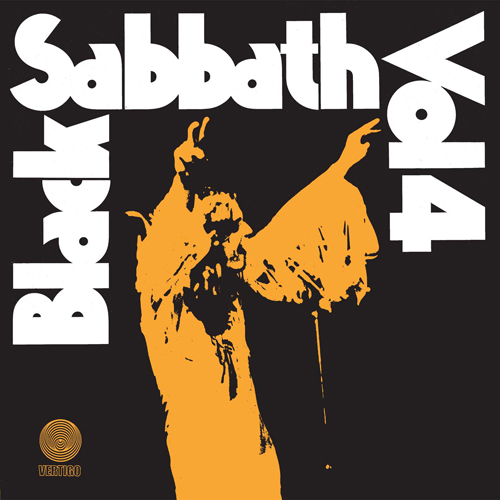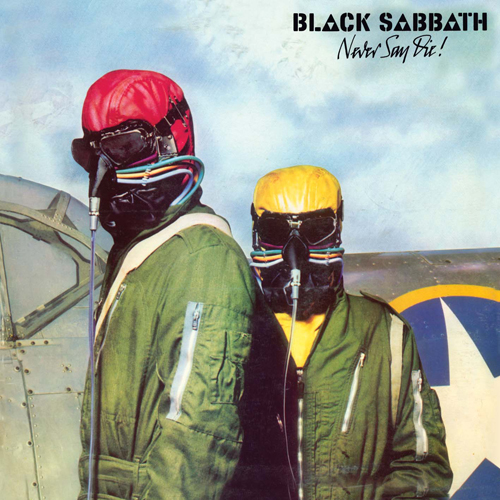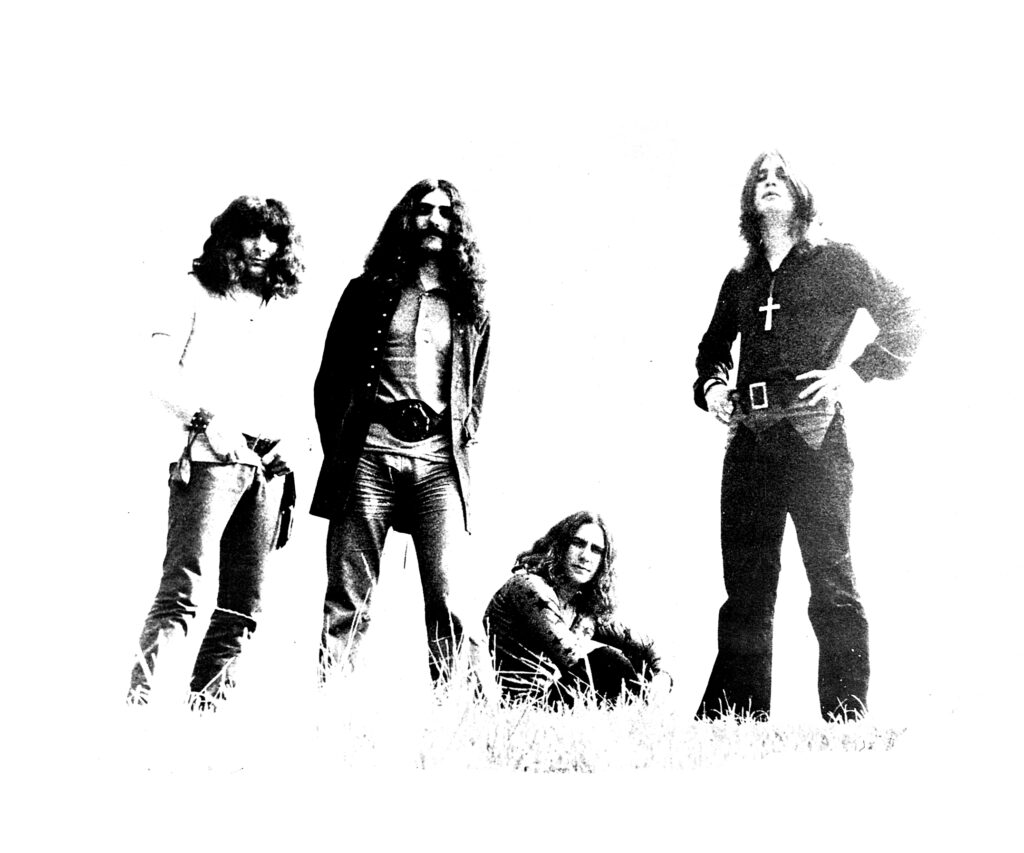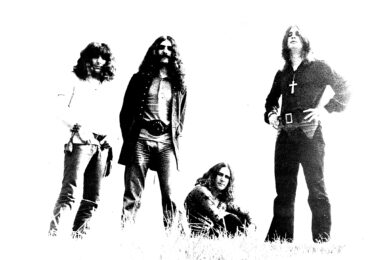Being 14 years old when punk hit, I was required to hate metal. I took every pronouncement and pose of the late-70s new wave of bands and critics as indisputable gospel, and their loathing of the dinosaurs of rock was based on sound thinking. They hated the dumb lyrics drawn from mutant variants on the dead tradition of the blues; the appalling hair and clothes; the belief that being in a band made you some form of God; the hick-town dungeons and dragons irrelevance; the faux-American vocals; and, most of all, the macho loathing/fear of women, which manifested itself in strangled-bollocks singing and bollocks-strangling loon pants stuffed with hosepipe, the ill-treatment of ‘innocent’ groupies, and all the other ugly accoutrements of what came to be known as ‘cock-rock’. Truly, every metal fan I knew in 1977 was a bloke, and it was generally a smelly bloke with spots and greasy hair who had barely got past the hit-them-and-run-away approach to communication with the opposite sex. Obviously, at 14, I was no further on. But I didn’t want to stay that way. I wanted to be a dazzling urbanite with a Siouxsie Sioux on my arm, the latest fad in culturally-informed threads on my body, and a Johnny Rottenesque sneer ready to drop from my lips at the very mention of guitar solos and devil women and the evil goblins of Merlin, or whatever gobbledegook headbangers took as deep and meaningful.
But through it all, I held a guilty secret. A pleasure, one would call it now, but at the time it merely felt like the slow and steady digging of a deep pit of shame. Because no matter how many earnest early-80s conversations I went on to have with urbane art-schoolers about the respective merits of The Fall and Kid Creole And The Coconuts, no matter how many second-hand zoot suits I bought or how many nearly-Siouxsies I managed to cop off with, no matter how hard I fucking tried – I couldn’t stop loving Black Sabbath. My favourite song in the world was ‘Paranoid’. The album I bought, at 14, straight after The Clash debut, was Sabbath Bloody Sabbath. I thought Ozzy Osbourne’s lyrics were kind of funny and true about alienation and depression and stuff. If my bohemian gang had known, I wouldn’t have got sex until my thirties.
So it’s hard to describe the joy involved in being asked to listen to five remastered and reissued (by Universal Music Catalogue) Black Sabbath albums in a row as part of my job. And to be doing so for a hip music website who don’t expect me to like heavy metal ironically. My home, today, is awash with sludgy riffage and tales of anxious alienation, and there’s no better place to start for that sort of thing than 1972’s Vol. 4. Having invented and defined metal on their first three albums (covered elsewhere on The Quietus in John Doran’s Sabbath essay), Brummies Ozzy Osbourne, Tony Iommi, Geezer Butler and Bill Ward forced out Vol. 4 through a blizzard of coke and hard liquor, with Ward admitting later in interview that the Bel Air recording studio was "where the alcohol and drugs stopped being fun".

No fun for the band, big fun for us. Vol. 4 is where Sabbath’s minimalist thud reaches optimum intensity while also travelling to unlikely places courtesy of guitarist Iommi’s increasing virtuosity and breadth of taste. ‘Snowblind’ and ‘Cornucopia’ are coke-blitzed screams for help, the former coming off like ‘Stairway To Heaven’ as re-interpreted by android bricklayers. ‘Tomorrow’s Dream’ and ‘St Vitus Dance’ are heavy punk rifferama; ‘Supernaut’ is too, except that it suddenly veers into a flailing drum break while Iommi finds his acoustic guitar and treats us to a gloriously unlikely Latin vamp. ‘FX’ is a contractual obligation classic: 93 seconds of dampened guitar strings being aimlessly plunked and put through an echo chamber. Gotta love the chutzpah.
The major shock — apart from the orchestra that turns up on the closing ‘Under The Sun’ — is ‘Changes’, Sabbath’s very own lovelorn power-ballad. Weeping along on just piano and mellotron, it’s the song’s typically no-frills simplicity that makes you believe that Ozzy just ain’t faking that heartbreak. No-one else could get away with a lyric in jaded and cynical 1972 that begins, "I’m feelin’ happy/I feel so sad." The song cries out to be covered badly but successfully by some mawkish hack and one wonders why Sharon never thought of foisting it upon one of her hapless protégés on The X Factor.
And speaking of Sharon, Ozzy was all set to meet the love of his life and secure a future as perpetually humiliated reality show drug casualty when, in 1974, Sabbath decided to bin co-producer/manager Patrick Meehan and hook up with Shazza’s Dad, notorious Midlands managerial hard-man Don Arden. This would lead to Meehan serving Ozzy a subpoena in the middle of a gig in America and two years of nasty litigation. But not before the increasingly wasted band released their masterpiece, 1973’s Sabbath Bloody Sabbath.
New engineer/co-producer Tom Allom introduced Iommi to the joys of multi-tracking and the treble switch, and the resulting wall of sound that blasts from your speakers on the titular opener is a riff to swallow the world. The band had had to escape ‘Hell A’ in order to stop pranging long enough to write and play, and found inspiration by recording in a dungeon in The Forest Of Dean. The result was the one Sabbath album that successfully reveals what a multi-faceted group the quartet could have been; an epic rock classic of doom, protest and paranoia with the kind of melodic and textural subtleties worthy of Zep and The Who at their most ambitious. And, while I don’t want to keep harping on about the punk thing, I don’t believe for one moment that Steve Jones wasn’t listening closely to the guitar sound here before getting round to practising his far cooler Johnny Thunders riffs. If there’s one Sabs album to buy, make it . . . well, actually, make it three: this, Vol.4 and Paranoid.
So, to recap: In the plus column, five million-selling albums, American stadium rock stardom and a powerhouse manager who could potentially make Black Sabbath as obscenely huge as Zep and Pink Floyd. In the minus column: a punishing four-year schedule of constant work involving making five albums while being on a never-ending world tour; heavy-duty drug and booze addictions; ever-looming legal problems; and a widening divide between twin leaders Iommi and Osbourne. Worse still, daft Radio 1 duffer Alan Freeman used Sabbath Bloody Sabbath’s contractual obligation muzak instrumental ‘Fluff’ as the theme to his Saturday rock show and even adopted Fluff as his nickname, dealing a savage blow to the band’s street cred.
Something inevitably had to give, and you can feel things beginning to unravel on 1975’s Sabotage, with its thinner sound, occasionally proggy leanings and lame "Will-this-do?" single ‘Am I Going Insane?’ Nevertheless, Sabotage is still a top-class metal album with ‘Hole In The Sky’ and the stunning ‘Symptom Of The Universe’ overwhelming some of the more obvious Led Zeppisms.
But the original Sabbath line-up was sliding toward an ignominious demise. To all the problems above, add declining sales for Sabotage and the following Best Of, an Ozzy motorbike accident and, of course, the impending arrival of the four horsemen of the punk rock apocalypse: socially relevant lyrics, short hair, straight trousers and spitting disdain for all things post-hippy. 1976’s Technical Ecstasy couldn’t have been more wrong for the times, veering hard away from Sabbath’s brutal minimalism, and giving drummer Ward a sappy power ballad called ‘It’s Alright’ when it very plainly wasn’t. Gary Woodruffe’s synths and organs became almost as dominant as Iommi’s guitar, and the fact that the album virtually invented the Van Halen techno-metal sound that would dominate the next heavy decade went unnoticed by critics and fans who declared Technical Ecstasy the band’s first stinker.
Time, in fact, has been somewhat kind to the record, as ‘Gypsy’ pomps away with the kind of Queen-y fairy-dust that is all the rage nowadays, ‘All Moving Parts (Stand Still)’ sounds oddly like Thin Lizzy jamming with Oasis, and ‘Dirty Women’ unknowingly invents Spinal Tap. But that’s the point: for the first time Black Sabbath sounded camp and self-parodic, and Technical Ecstasy is an album you can only enjoy with one eyebrow raised.
Ozzy did the smart thing, quitting the band and lying low while punk rearranged rock ‘n’ roll’s furniture with the equivalent of a flame-thrower and an army of chainsaws. Who knows why he decided to come back for 1978’s Never Say Die! . . . loyalty, money, nostalgia, contractual obligation, keeping his future father-in-law sweet; all of the above? But its existence means there’s a final album by the classic Black Sabbath line-up before Ozzy moved on to Sharon, Ozzfest, pissing on The Alamo and biting the heads off things that fly, and Sabbath moved onto Ronnie James Dio.
And listening to Never Say Die! after all these years reveals that Sabbath had one more thing left to invent: the scene that the critics at Sounds magazine dubbed The New Wave Of British Heavy Metal. One has to appreciate the irony.
TNWOBHM was metal in survivalist mode. Bands such as Judas Priest, Saxon, Iron Maiden and Def Leppard acknowledged — even celebrated — their own ridiculousness and sang about rock as if was an endangered animal that deserved a big round of applause for having the temerity to continue existing. And it entirely took its cues from this tired and mediocre record.
Never Say Die!’s title set the tone — this was, after all, a band who made their name by repeatedly inviting death in for a cup of coffee and hoping they could talk it into a shag — and the title track proved that metal could have rousing hit singles in a new pop-orientated era where albums without singles simply ceased to exist. The guitars sounded glossy, the melodies were more major than minor and took precedence over riff, plasticky synths got free reign to dilute the sound; good taste prevailed distressingly, and a mood of forced optimism dominated as Osbourne and Iommi repressed their mutual antipathies and darker obsessions. The record successfully ignored punk’s impact, but did so by ignoring Black Sabbath’s obvious influence on the doomier end of punk, just as bands like Black Flag and Killing Joke were gearing up to make that influence apparent. "Wandering aimlessly", Ozzy wails tunelessly, as the horrible soft-rock keyboards wander aimlessly all over ‘Over To You’.

Never Say Die! died in America, and Ozzy got sacked, taking all the audience goodwill and charisma with him. The four original members reformed in 1997 for hugely successful tours and a platinum-selling live album, which inspired recording sessions with Rick Rubin for a studio comeback album. It never emerged and Ozzy became his mouthy-yet-oddly-alluring wife’s trembling sidekick.
I’m writing this last paragraph as the guitar solos from Never Say Die!’s ‘Shockwave’ remind me, yet again, what a stunning axe-mangler Tony Iommi was and is. The song is the best thing on Never Say Die, and sounds, yet again, like Led Zeppelin. Maybe that was always Sabbath’s problem: there was always this other band from down the road in Birmingham who seemed to do everything with just that bit more prescience and elan than them. But, even after all these years, I admire Led Zeppelin — while I feel real warmth and affection toward Black Sabbath. They were silly and clumsy and misguided and ultimately doomed to fail. How, as a provincial punk rocker, could one fail to relate?



